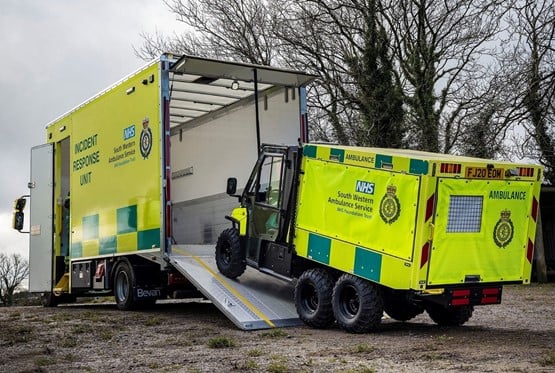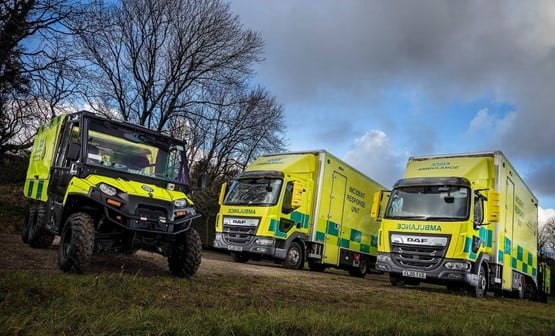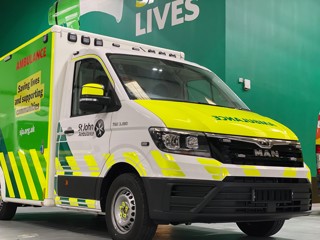
WAS UK and Bevan Group have been commissioned to build 14 transporters for English NHS Ambulance Trusts.
The purpose-designed transporters carry 6x6 Ranger Polaris all-terrain vehicles that enable paramedics to reach emergency scenes at difficult-to-access, off-road locations.
Hazardous Area Response Team (HART) paramedics in the South West have become the first in England to take delivery of new-generation incident response units.
The transporters are based on 7.5-tonne DAF LF chassis. Each is fitted with a box body and integral, split beavertail ramp, which allows for rapid deployment of the ATV – the longer section of the ramp also forms the rear closure.

Other features include a power management system configured by WAS to operate the emergency response communications equipment and blue lights. A side door with fold-out step providing easy access to the front of the body, and a bulkhead cupboard which provides storage.
A pressure washer fed from a 100-litre water tank is neatly stowed behind the truck’s back axle, and used to hose down the ATV following off-road operation, while the floor of the truck body has a watertight anti-slip finish so can be easily washed out.
Gerry Byrne, head of capabilities at the National Ambulance Resilience Unit, said: “We’ve learned a lot over the last decade about how these vehicles are deployed and used, and all of that knowledge went into the new design.
“The latest Polaris has a longer patient area than its predecessor, which means the stretcher is fully enclosed within the heated vehicle. As a result, the ATV is more comfortable on rough terrain and more efficient than the previous version. As far as transportation is concerned, we were keen to dispense with the demountable pod system and move instead to a box body.”
The Polaris is capable of carrying a driver, up to two more paramedics and a patient on a stretcher. The transporter’s design – a 2.0-tonne winch is also fitted – allows the ATV to be safely loaded and unloaded. The ATV is firmly secured during transportation by front wheel retainers and ratchet straps that anchor the back axle to the floor.
The new transporters are replacing the first-generation trucks that HART teams have been operating for the last 10 years. These are also based on 7.5-tonne chassis but fitted with hook-loading equipment which is used to offload and pick up the special pods that carry the ATVs. Not only does the process of deployment take considerably longer than with the new, Bevan-built trucks, but it also requires a good deal more space to safely offload the pod.



















Login to comment
Comments
No comments have been made yet.